South Island New Zealand with Adventures Abroad
This is the first of a number of posts from New Zealand’s South Island which Alison and I visited on a March 2025 Adventures Abroad tour led by the one and only Chris Tripodi. In the last post I described the highlights of two visits to the capital city of Wellington. In this post I’m going to feature quite a number of very different experiences on the first two days of our time in South Island. We’ll start with the ferry ride across Cook Strait, spend the night in the wonderful little town of Picton and continue on from there to wine tasting, wildlife viewing and a train ride high up into the Southern Alps. It promises to be an amalgam of amazing so I hope you’ll join us.
Our journey to the South Island begins in Wellington where we board the Interislander ferry Aratere for the 3.5 hour crossing of Cook Strait from Wellington to the small port of Picton, deep inside Queen Charlotte Sound.
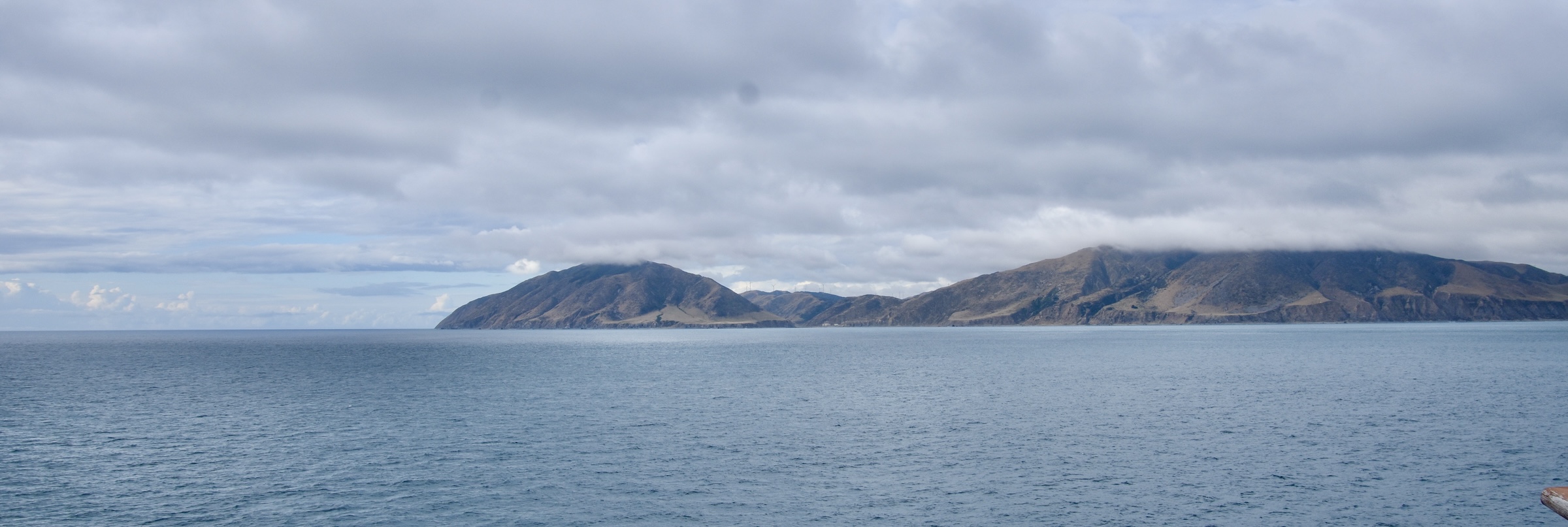
The sea is almost dead calm as we wave goodbye to the North Island. Alison and I will be returning, but the rest of the group will not, so for them it’s a final farewell.
I was hoping to see an albatross or two on this crossing, but no such luck. That will have to wait for later in this trip.
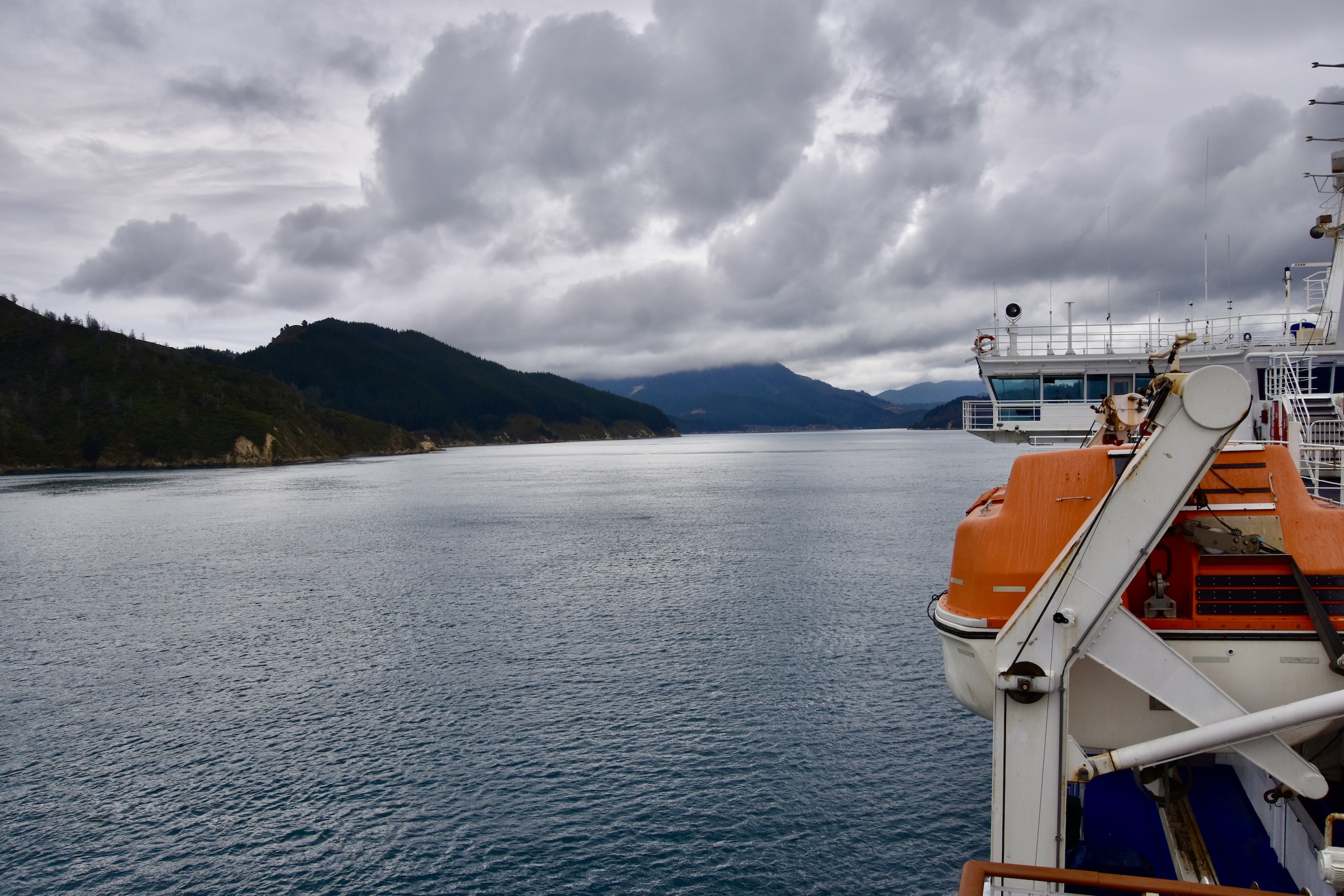
This is the view heading deep into Queen Charlotte Sound. We arrive at Picton and check into our rooms at what was the Picton Yacht Club Hotel, but has just rebranded as the Edit Picton. Why you would want to change your name from something classy sounding to something blah, is beyond me.
Our dinner that night is at one of the oldest restaurants in New Zealand, Oxley’s which has been serving great seafood since 1870. Here’s the proof.
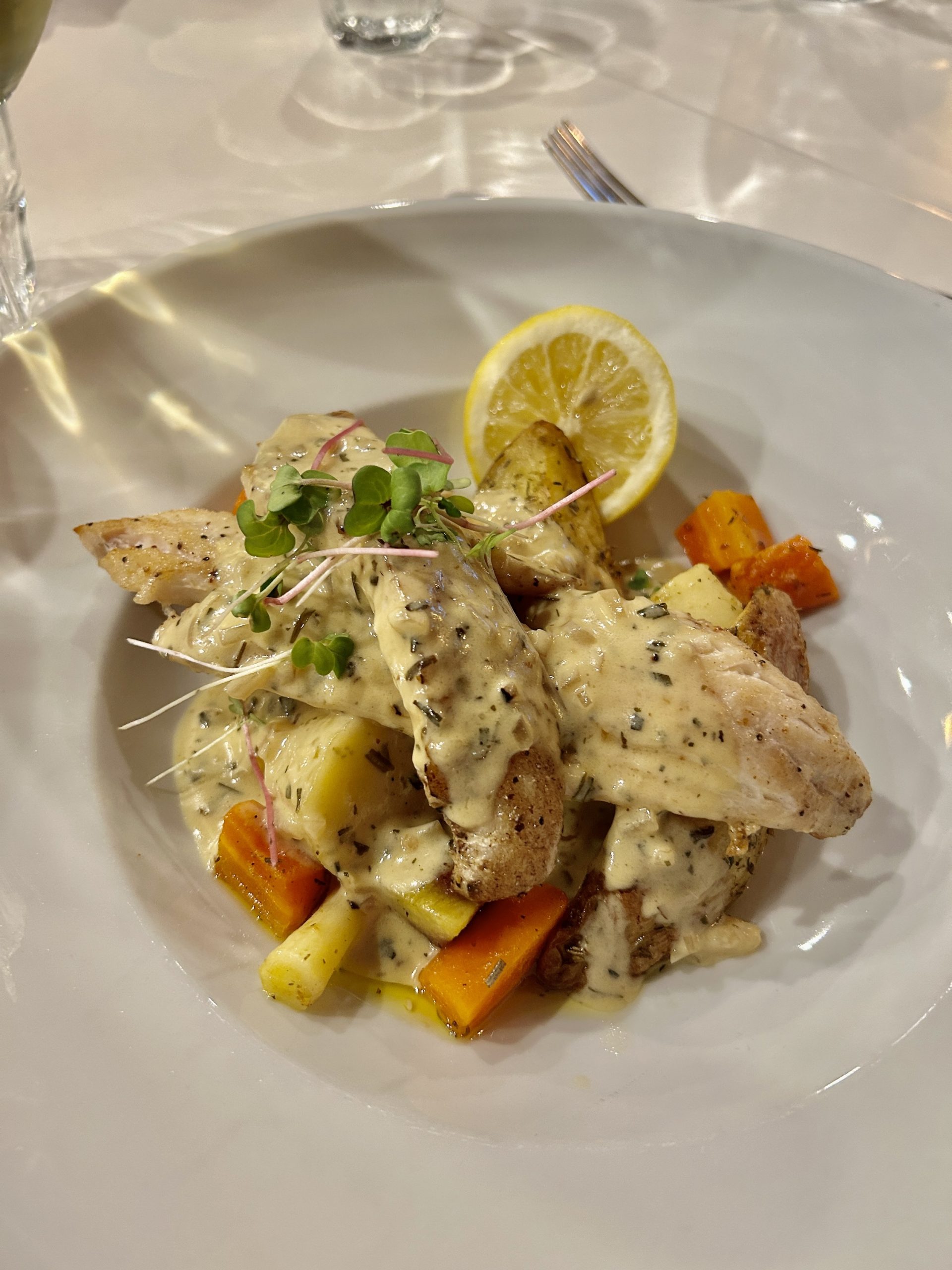
I begin my exploration of South Island on my own early the next morning with a stroll to the Picton waterfront where I swear there are more boats than people in this town.
This is Coathanger Bridge which crosses the narrow entrance to the inner harbour.
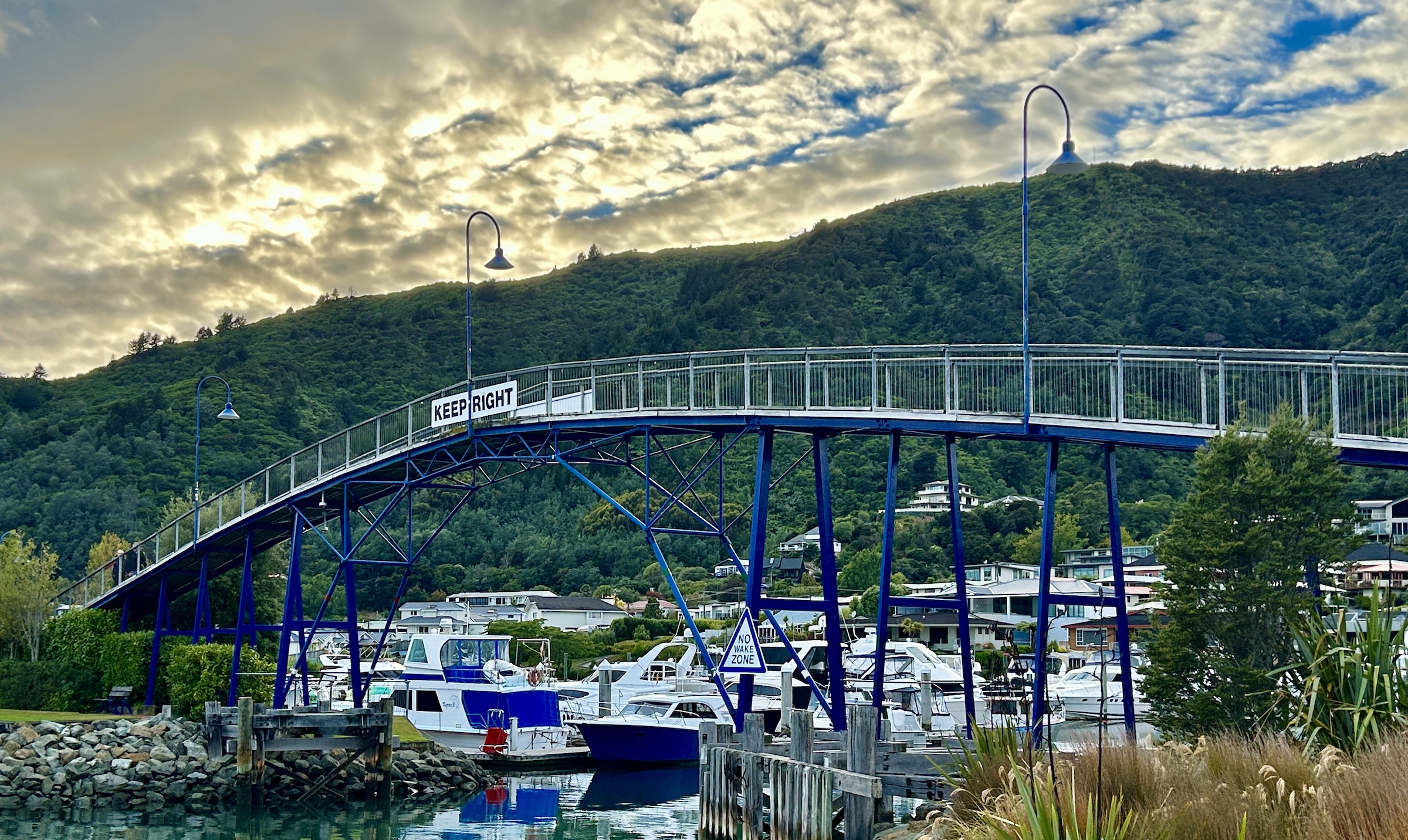
It’s the perfect perch from which to take in the 360° view of the boats of Picton as you can see from this short video I took.
Heading south from Picton our first destination is the Marlborough wine country where over 150 vineyards produce the sauvignon blanc grapes that have put this South Island region on the radar of the world’s oenophiles. But first, we stop for one last look at Queen Charlotte Sound before leaving the Picton region in our rear view mirror. If this is a preview of the type of landscapes the South Island has in store for us, bring it on.
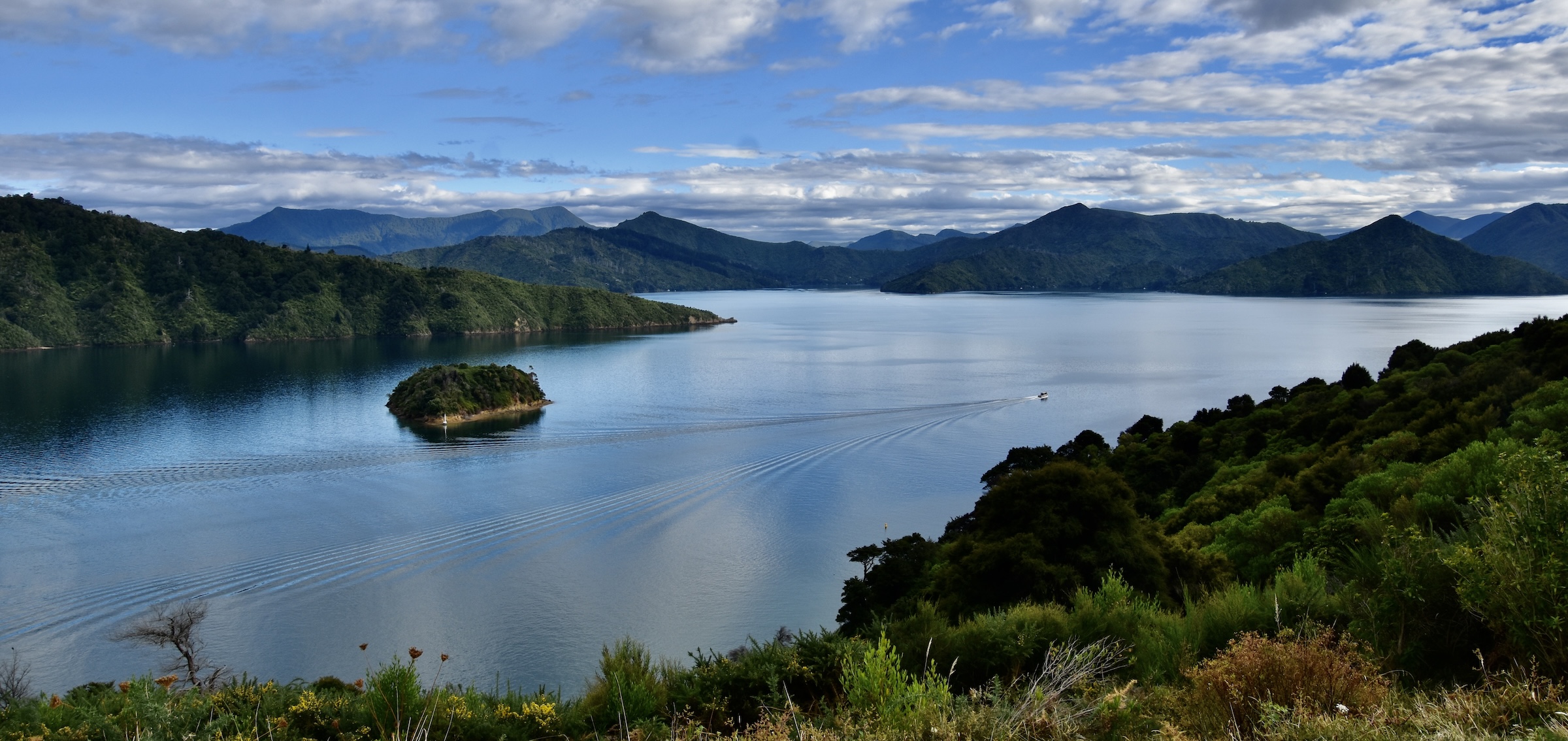
Anyone who follows my website will know that I love drinking wine and never pass up a chance to visit a winery. Luckily, Adventures Abroad shares this passion and our first major stop of the day is at Lawson’s Dry Hills winery on the outskirts of Blenheim, the centre of the Marlborough district. We have have been passing by huge swaths of land now planted with sauvignon blanc grapes where sheep and cattle grazed right up until the 1970s. The wine industry on the South Island is quite young compared to the North Island where some Hawke’s Bay wineries date back to the mid 1800s. Most people would be surprised to learn that it was only in 2018 that the Marlborough region received its designation as a Geographical Indication (GI), putting it in the same class as Bordeaux, Napa Valley and the Barossa Valley in Australia.

However, here’s the rub for me – I can’t stand the New Zealand version of sauvignon blanc wines. The people who like them, and that would be the majority of wine drinkers, get a gooseberry finish that they say is unique and is what makes these wines so famous. For those who don’t like the wine, the odor is frankly that of cat piss. Trust me I’m not the only one who gets that reaction.
So here I am, coming face to face with my wine nemesis on its home territory. These are Lawson’s Dry Hills sauvignon blanc vines.
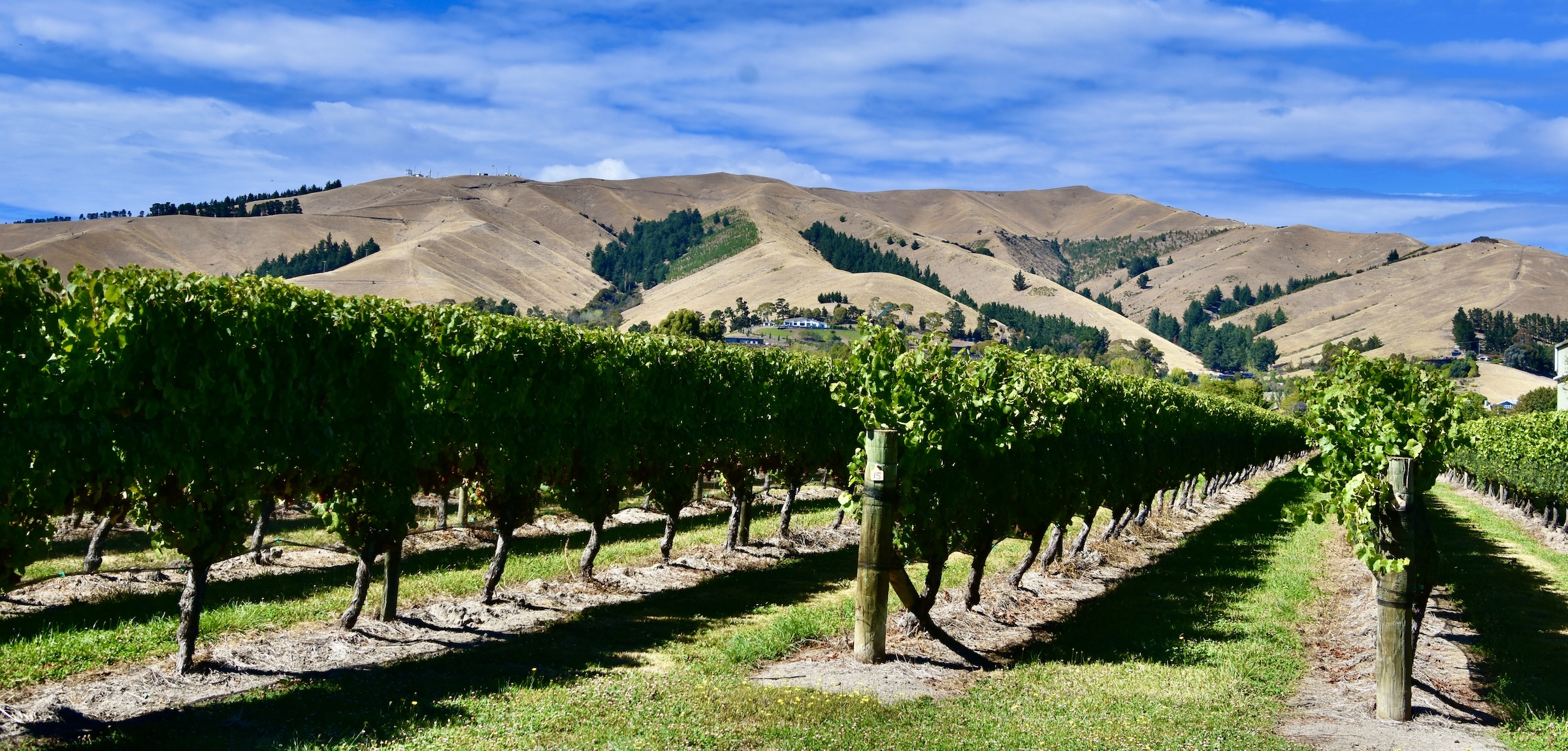
And this is the tasting room.
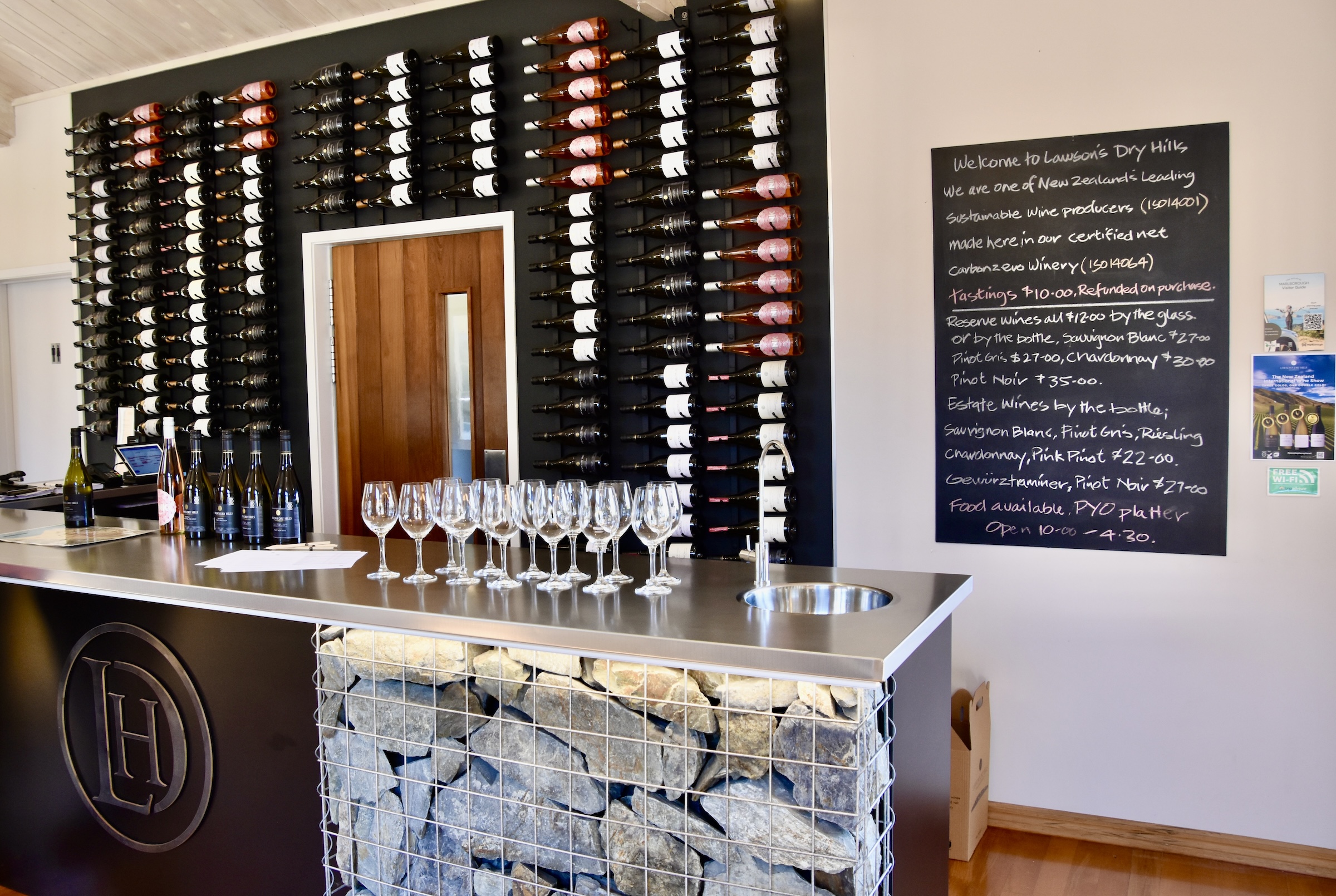
These are the wines we tasted. You’ll note that only one is a sauvignon blanc on which I shall not pass judgment. I will however, sing the praises of the pinot gris, chardonnay and pinot noir. Although the Marlborough region is on the map because of one grape variety that does not mean that it does not produce other good wines. In fact I purchased a few bottles to prove it.
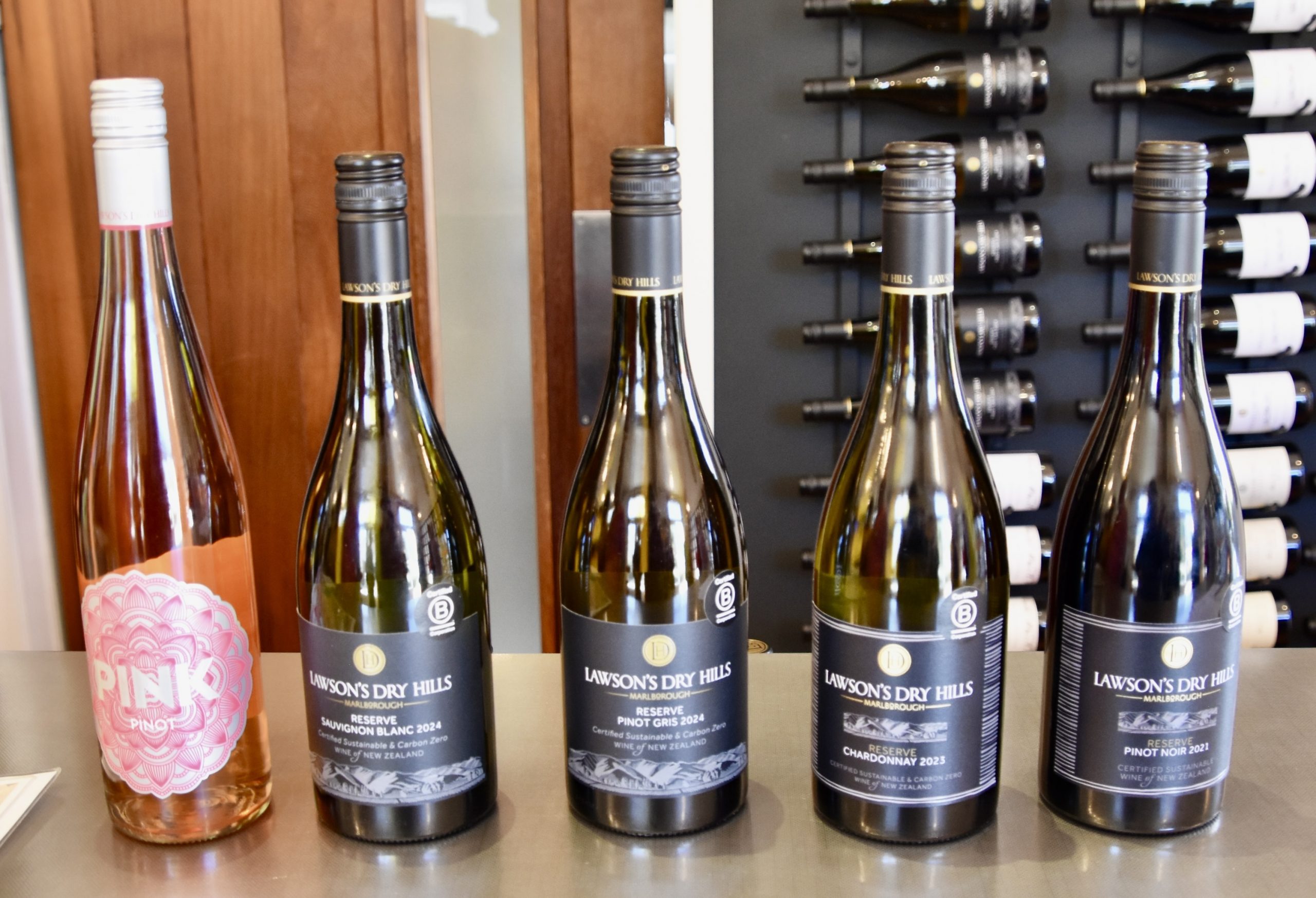
Heading south along the Pacific Coast we have a short stop for some wildlife viewing.
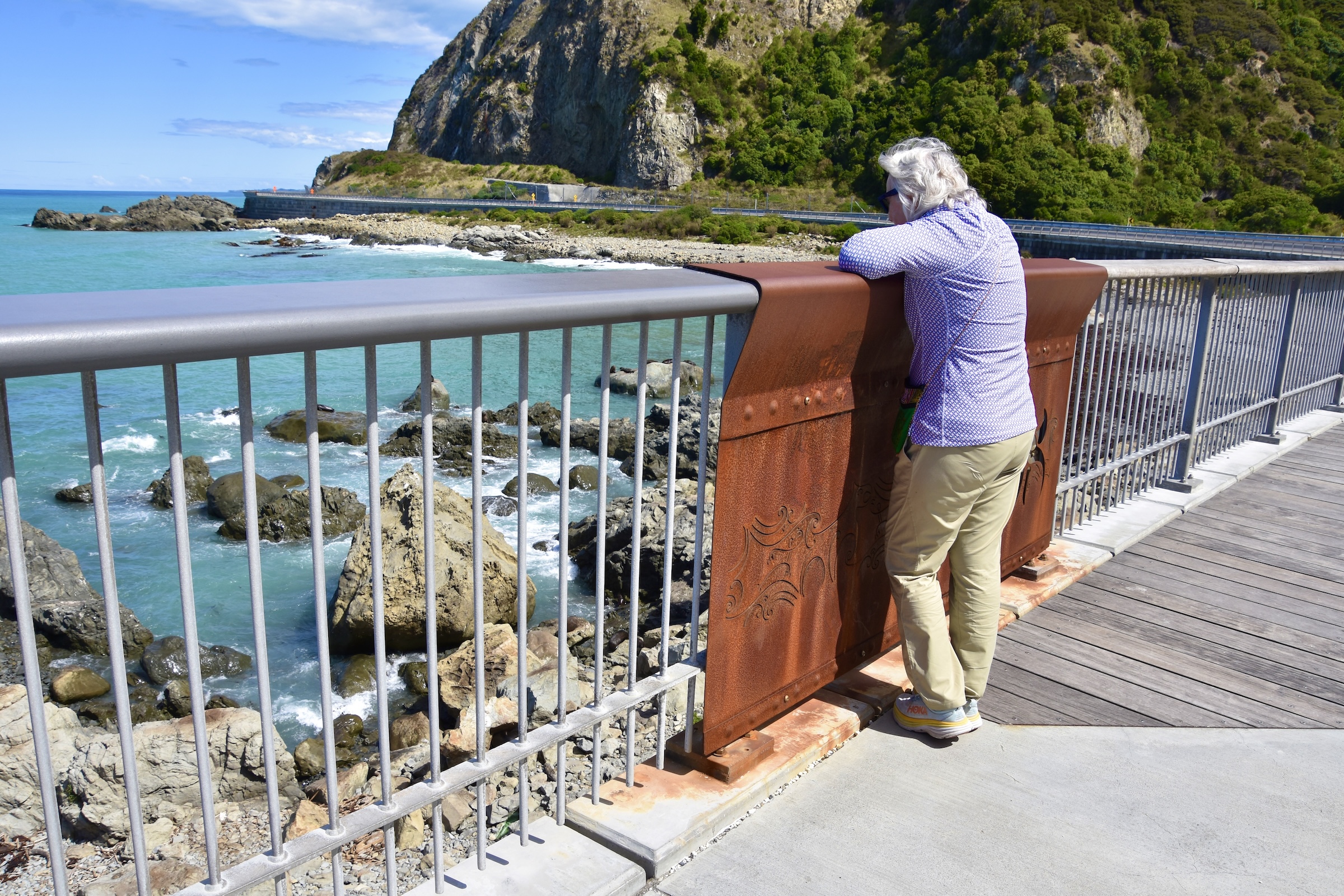
In the Bay of Islands Alison and I had to take a boat out miles from shore to see one lone fur seal. Here, near Kaikuara, there is a fur seal colony literally right beside the road. There are dozens of pups that are having a ball chasing each other around in the protected cove where they are safe from the sharks and orcas that lurk offshore.
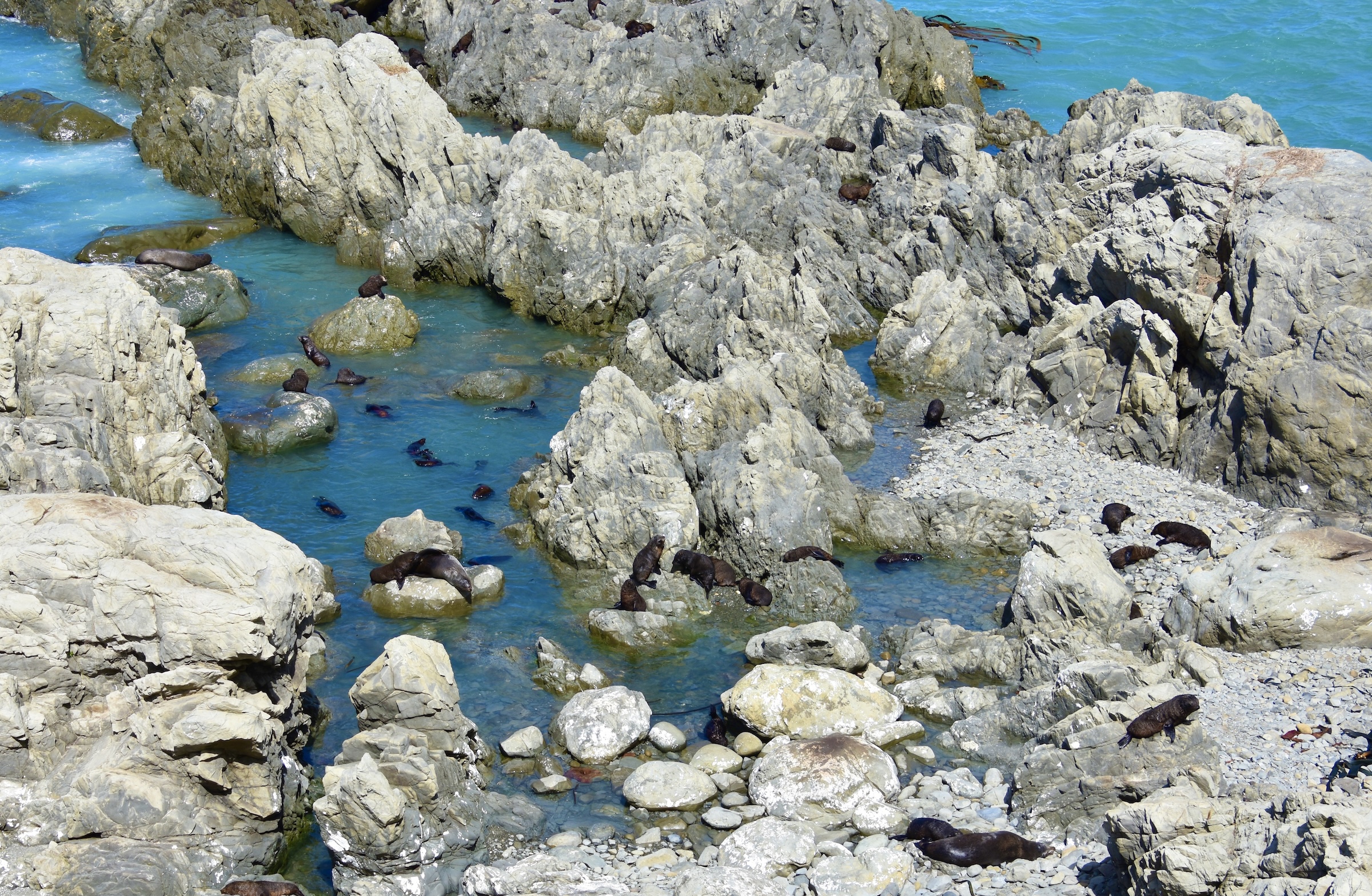
I’m going to skip ahead a bit here to the next great South Island adventure and that was the train ride from Christchurch to Arthur’s Pass which started early the next morning from the Christchurch train station which is on the outskirts of the city.
Rail New Zealand offers a number of scenic train routes on South Island including the TranzAlpine that goes from Christchurch on the Pacific to Greymouth on the opposite side of the island on the Tasman Sea. We will be taking it as far as Arthur’s Pass which is a two and a half hour journey that will take us from the flat Canterbury Plains up to an elevation of 920 metres (3,020 feet) where we will meet up with our driver Ian again. All aboard!
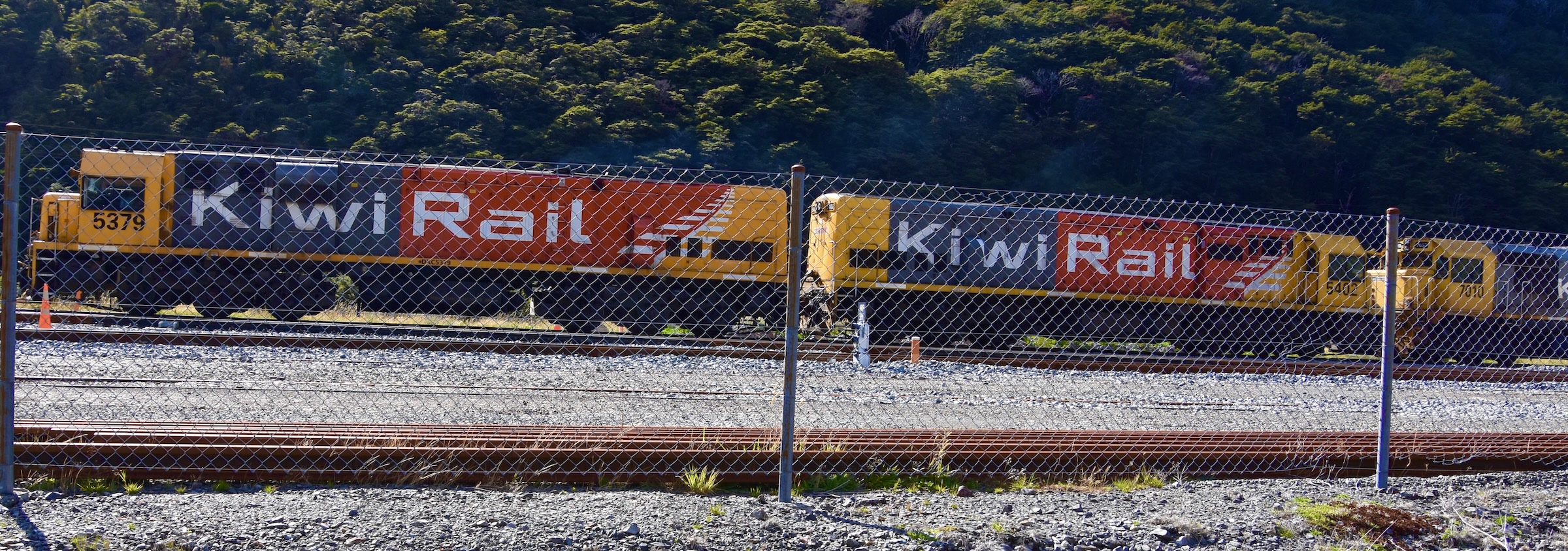
We all have reserved seats or can make our way down to the end of the train to this open car called The Birdcage if we want unobstructed views for our photos.
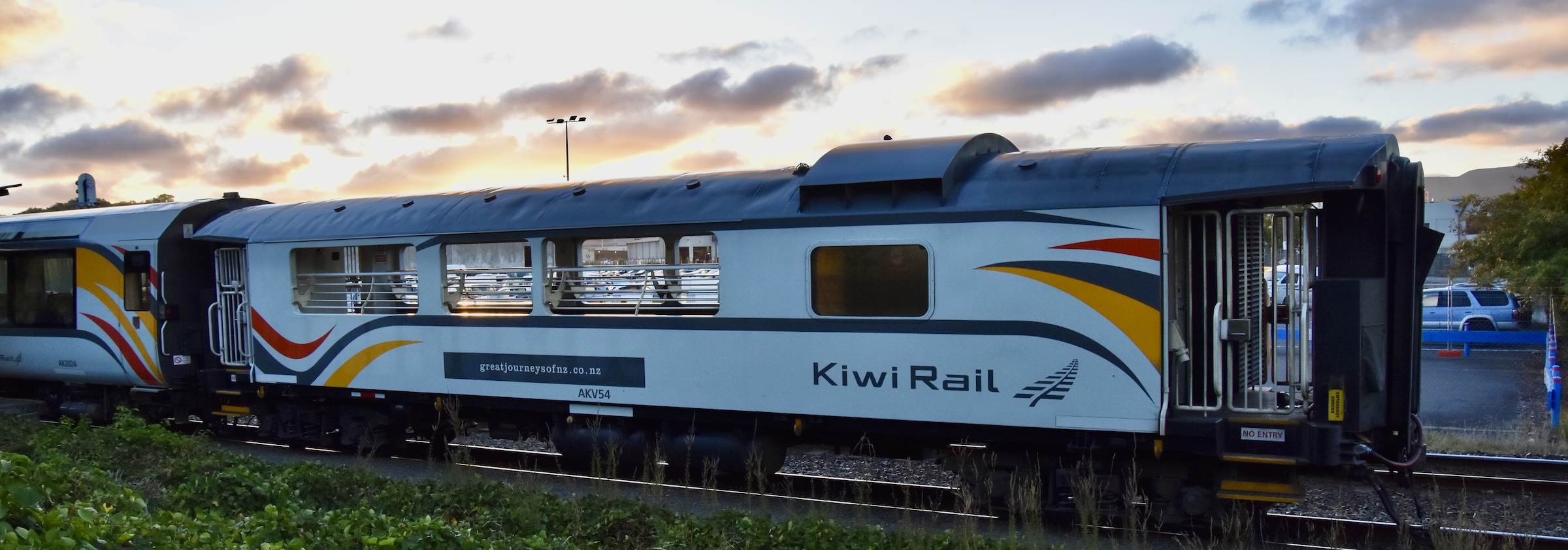
The Canterbury Plains are dead flat and produce 80% of all New Zealand’s grains and other crops. As we leave them we encounter the first of the South Islands many braided rivers. It doesn’t look like much, but later on this tour we will get a much closer look at another braided river, the Haast and find out that they are pretty interesting after all.
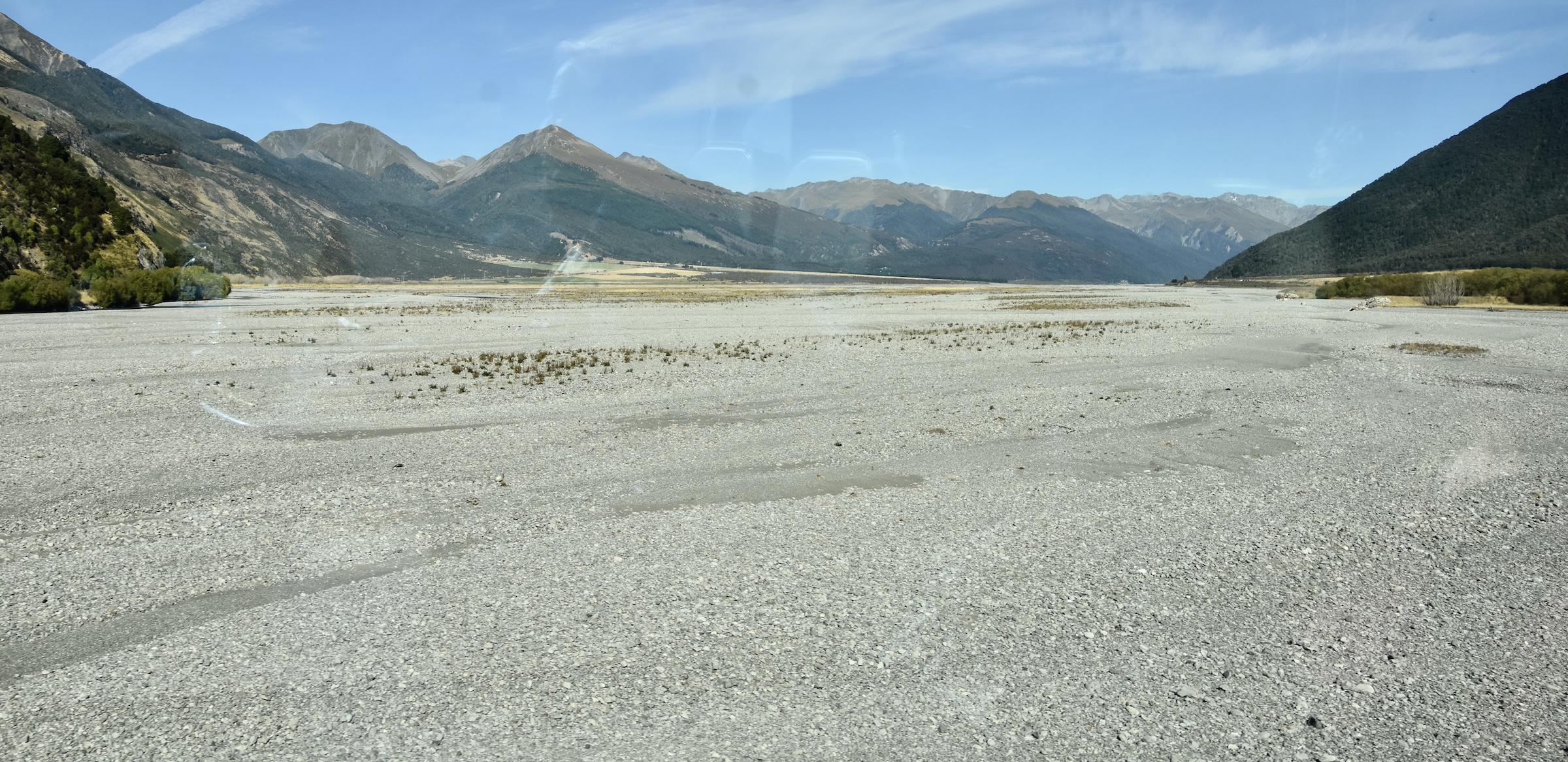
Leaving behind the wheat fields and orchards of Canterbury Plains we get into cattle country where beef cattle like these roam freely. Most people think of sheep when they think of New Zealand livestock, but there are almost 10 million beef and dairy cattle in the country.
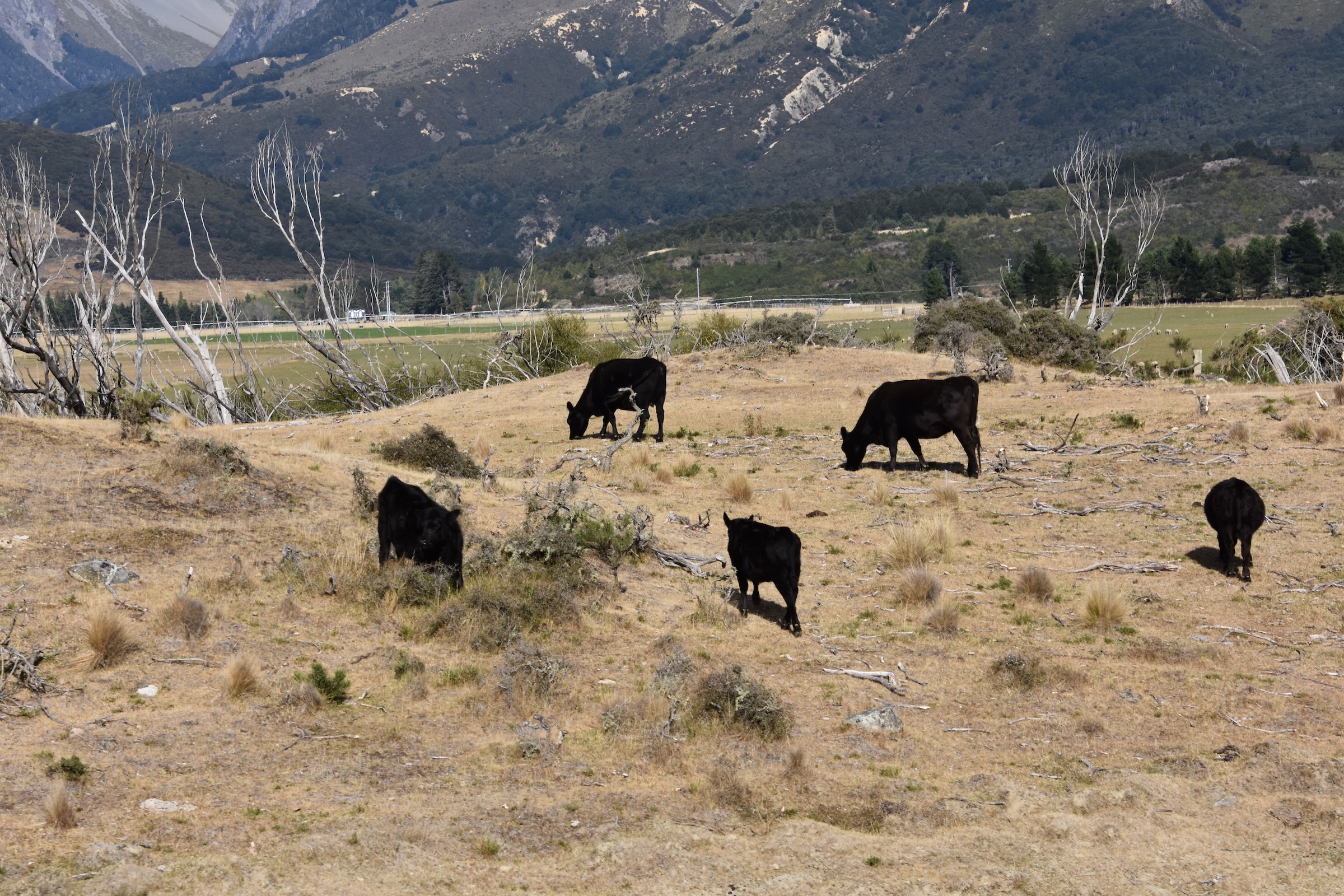
Now I’m not going to pretend that the scenery on this rail trip is equal to that which you’ll find on the Adventures Abroad Switzerland by Rail tour that Alison and I took a few years back, but in my books there is no such thing as a bad train trip.
We went from small hills.
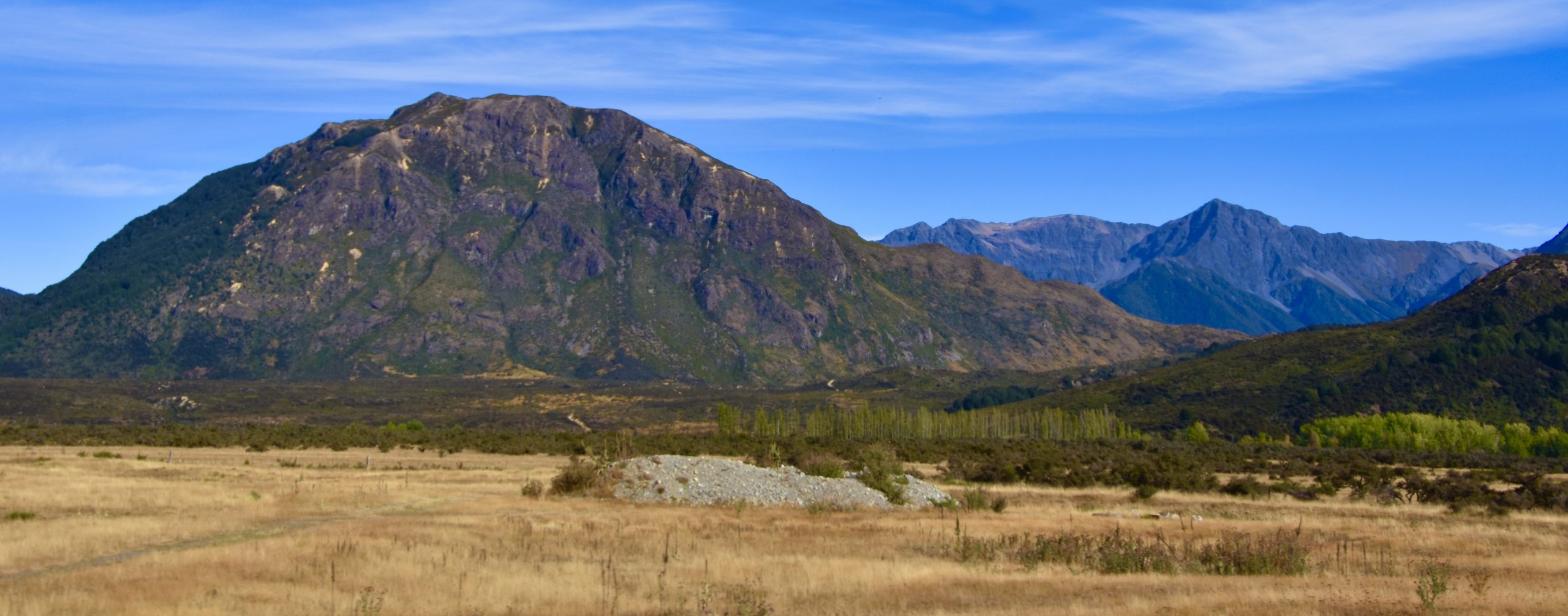
To larger ones.
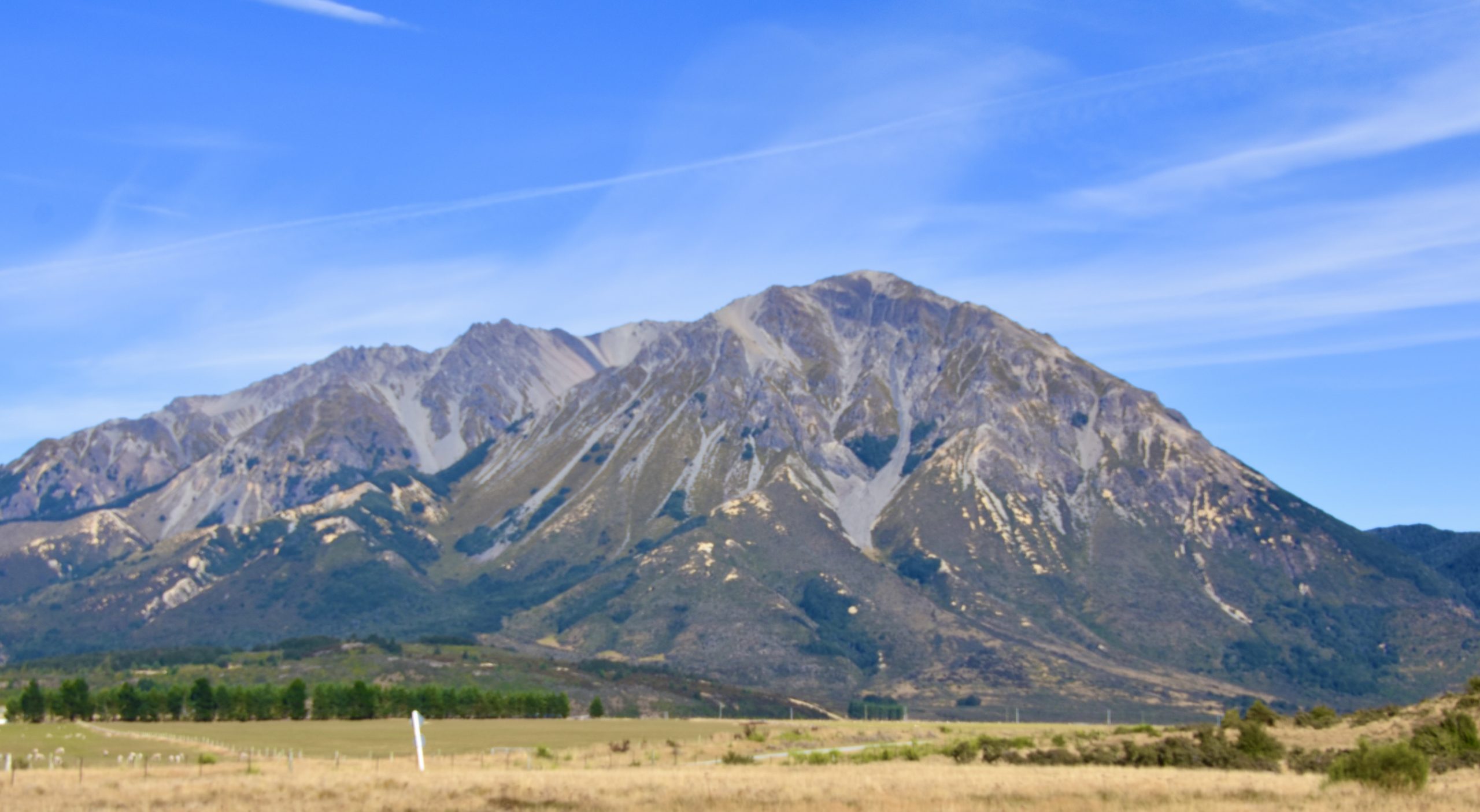
And even larger ones where I couldn’t tell if that was sand or snow covering the mountain top. I’m pretty sure it was snow, but I could be wrong.
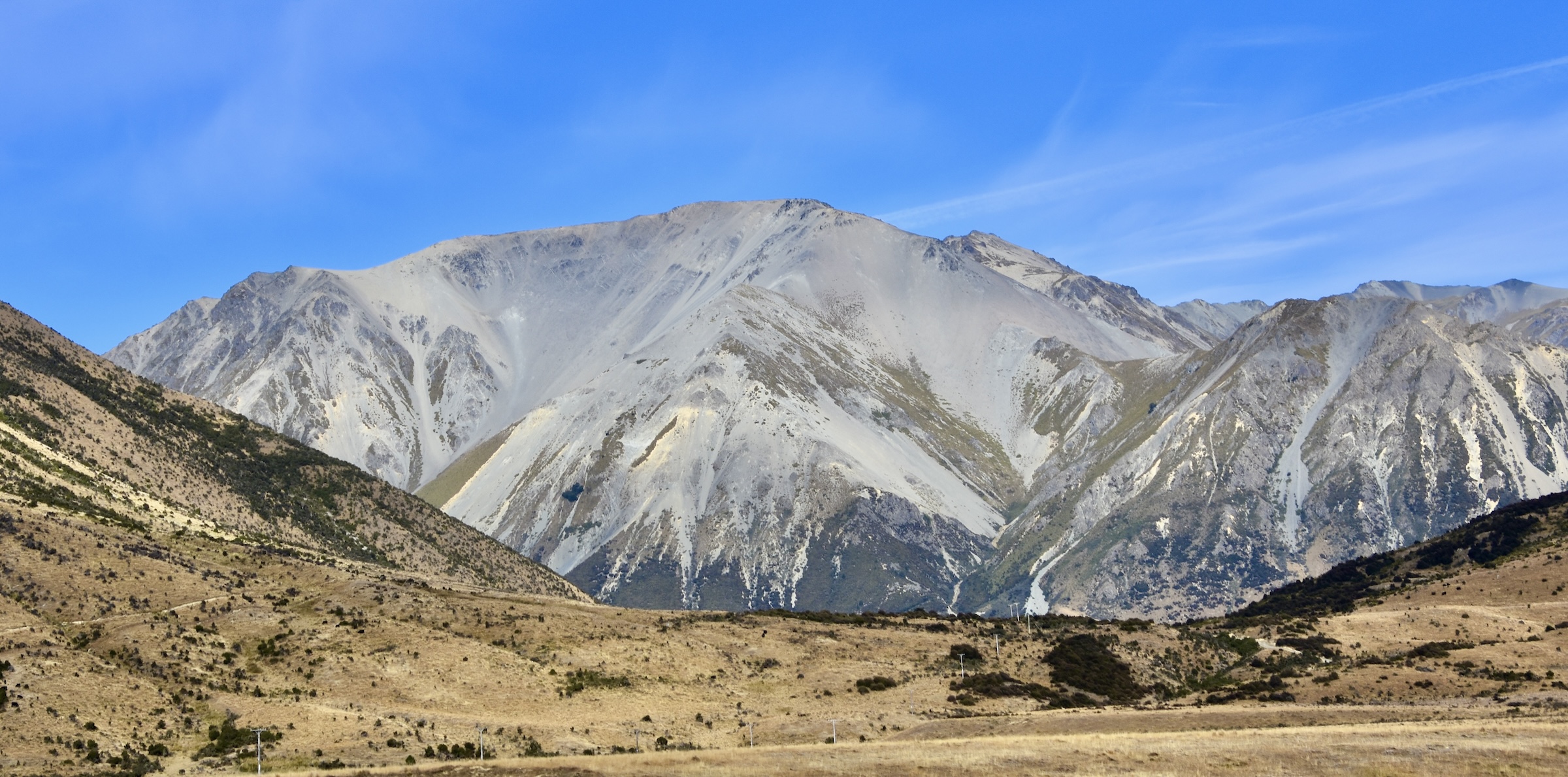
Ian had beaten us too Arthur’s Pass and was waiting for us as we disembarked, ready to take us down to the the town of Hokitika on the opposite side of South Island from Christchurch. Fashioning itself as ‘Cool Little Town’ the place lives up to its moniker. I have commented earlier about the ambience these small New Zealand towns have that sets them apart those in North America where cost and convenience are king. 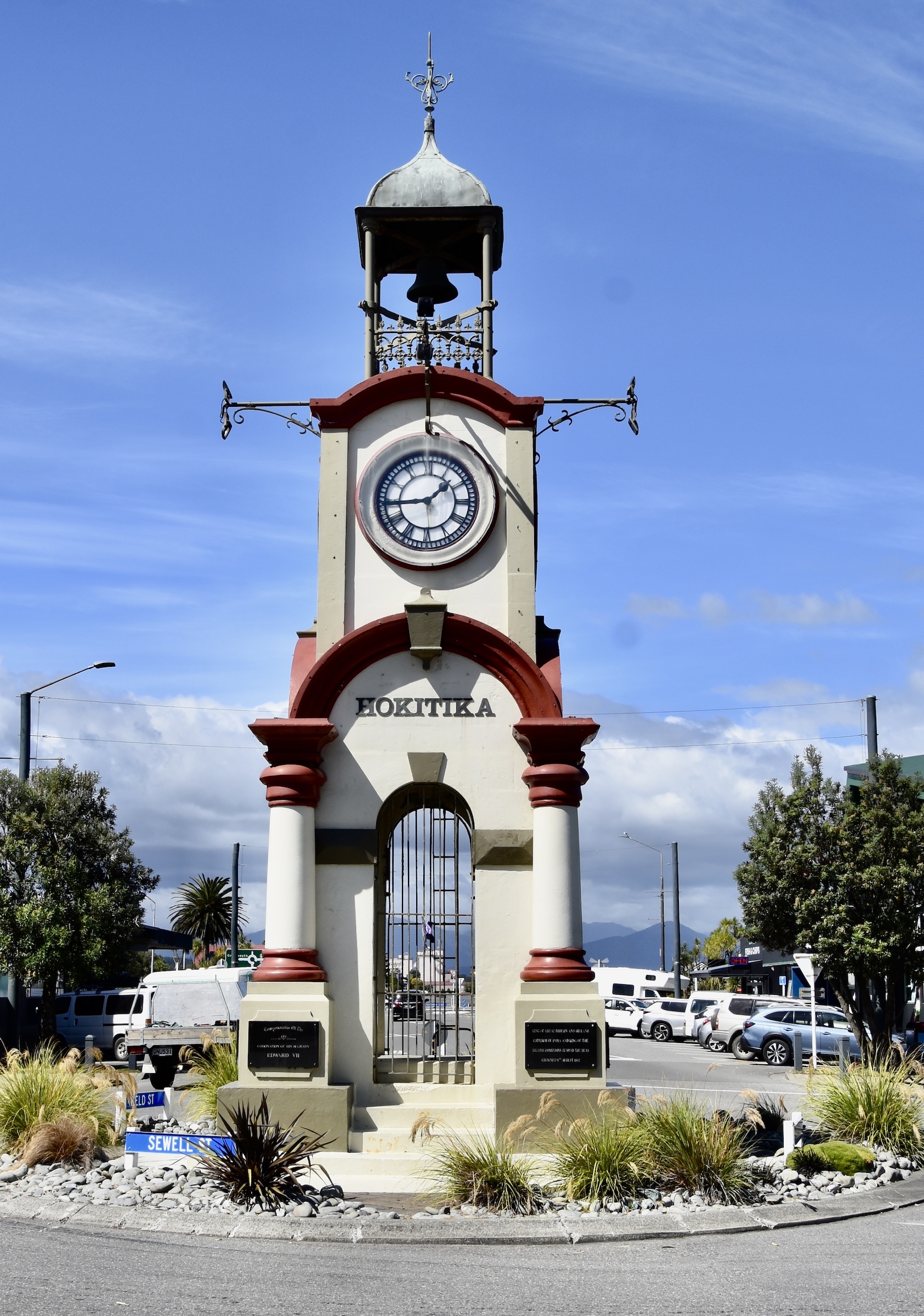 Hokitika Clock Tower
Hokitika Clock Tower
Here community, respect for the past and celebrating the outdoors are the hallmarks of a place you want to live in and Hokitika checks the boxes on all three. This is the town’s tribute to the founding fathers, the Pioneers of the Westland monument.
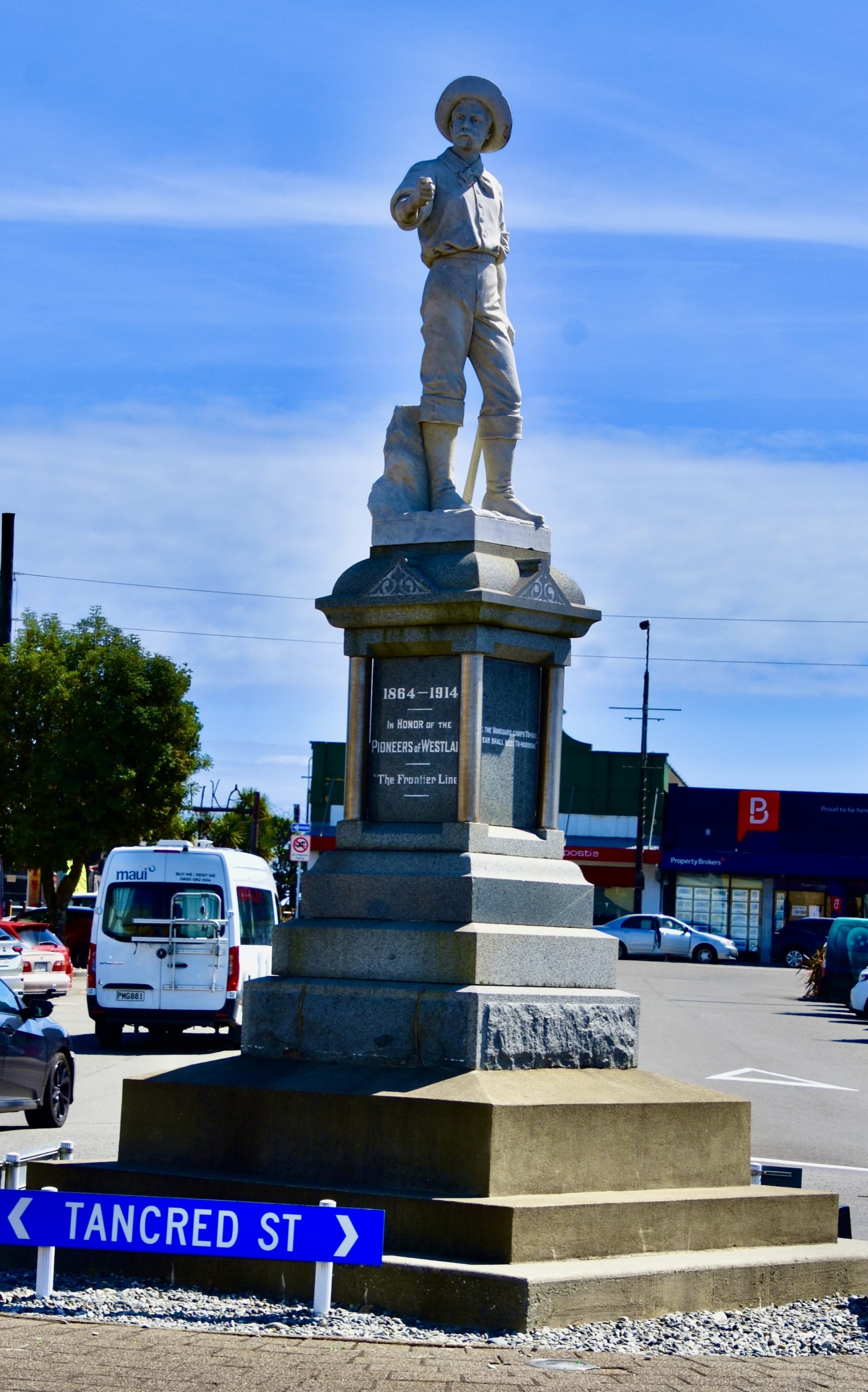
Pretty well every one of these small towns has a high quality museum and Hokitika is no exception.
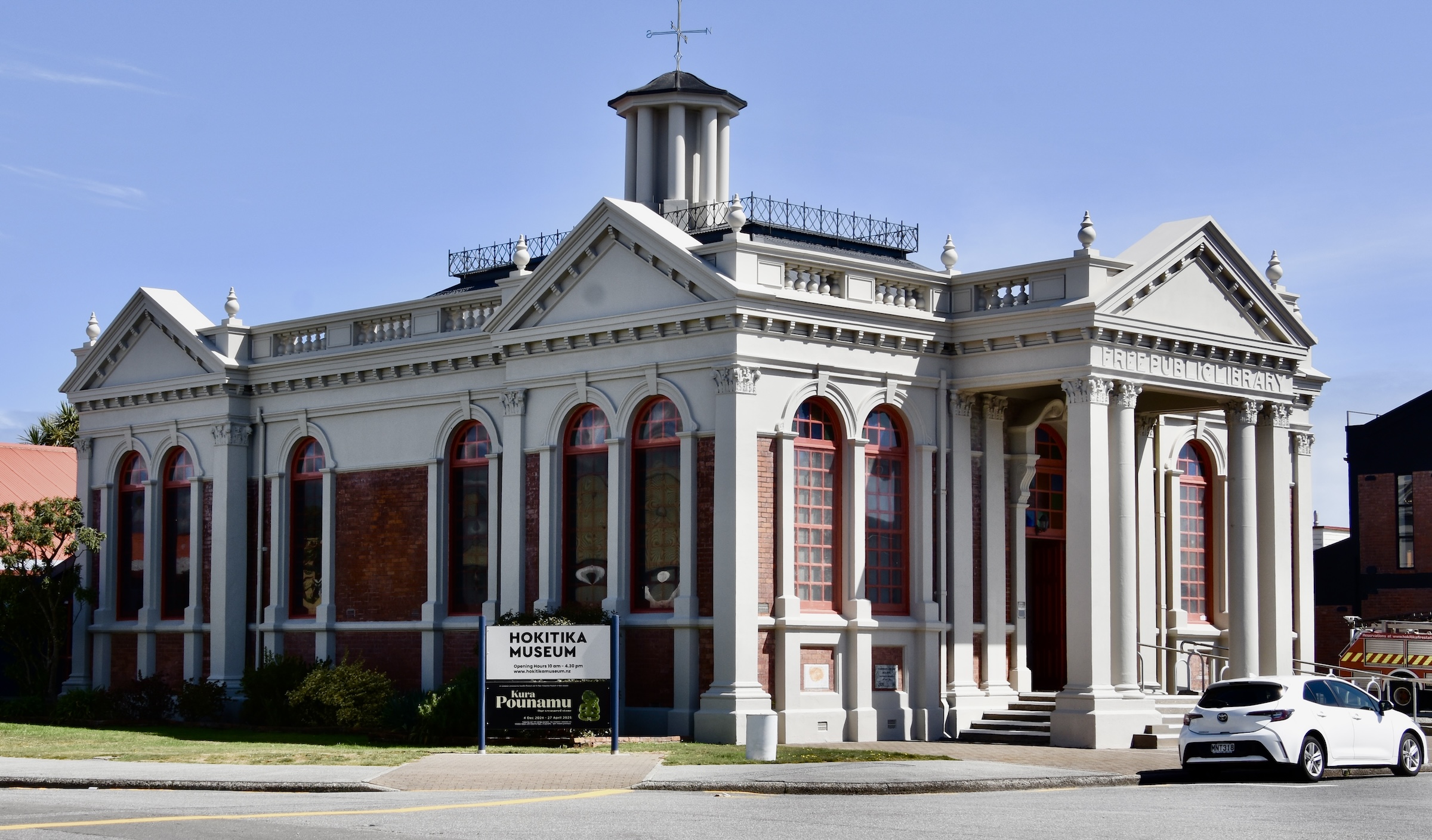
One of the traditional New Zealand dishes I wanted to try was whitebait, which are tiny immature smelts that migrate up New Zealand rivers in the spring and are considered a delicacy by Kiwis. Ian said Hokitika was one place we could sample whitebait and took us to a small restaurant where it was offered in several dishes. This is a whitebait fritter which we would probably call an omelet. If you can avoid making eye contact with the poor little devils they’re actually quite tasty.
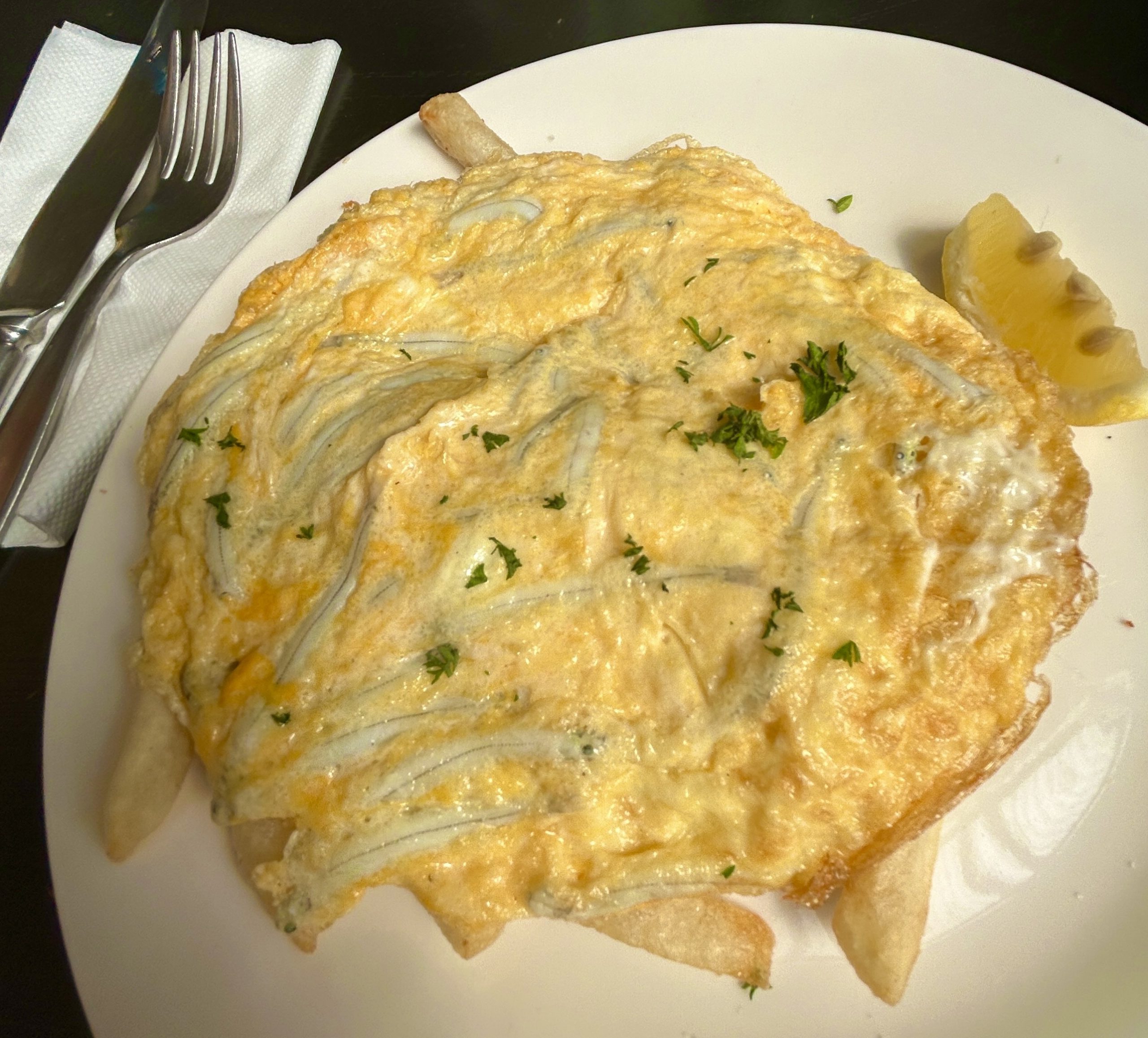
Our final destination for today was the small town of Franz Josef which was named after the then Austrian emperor by Austrian geologist Julius von Haast in 1865. He also gave the same name to the glacier that once extended all the way to the Tasman Sea but is now 19 kms. (12 miles) from it. Still it is one of the Southern Hemisphere’s most significant glaciers covering 20 sq. kms. (7.7 sq. miles) and topping out at 2,500 metres (8,000 feet). It is also up to 300 metres (980 feet) deep and extends a distance of 11 kms. (6.8 miles).
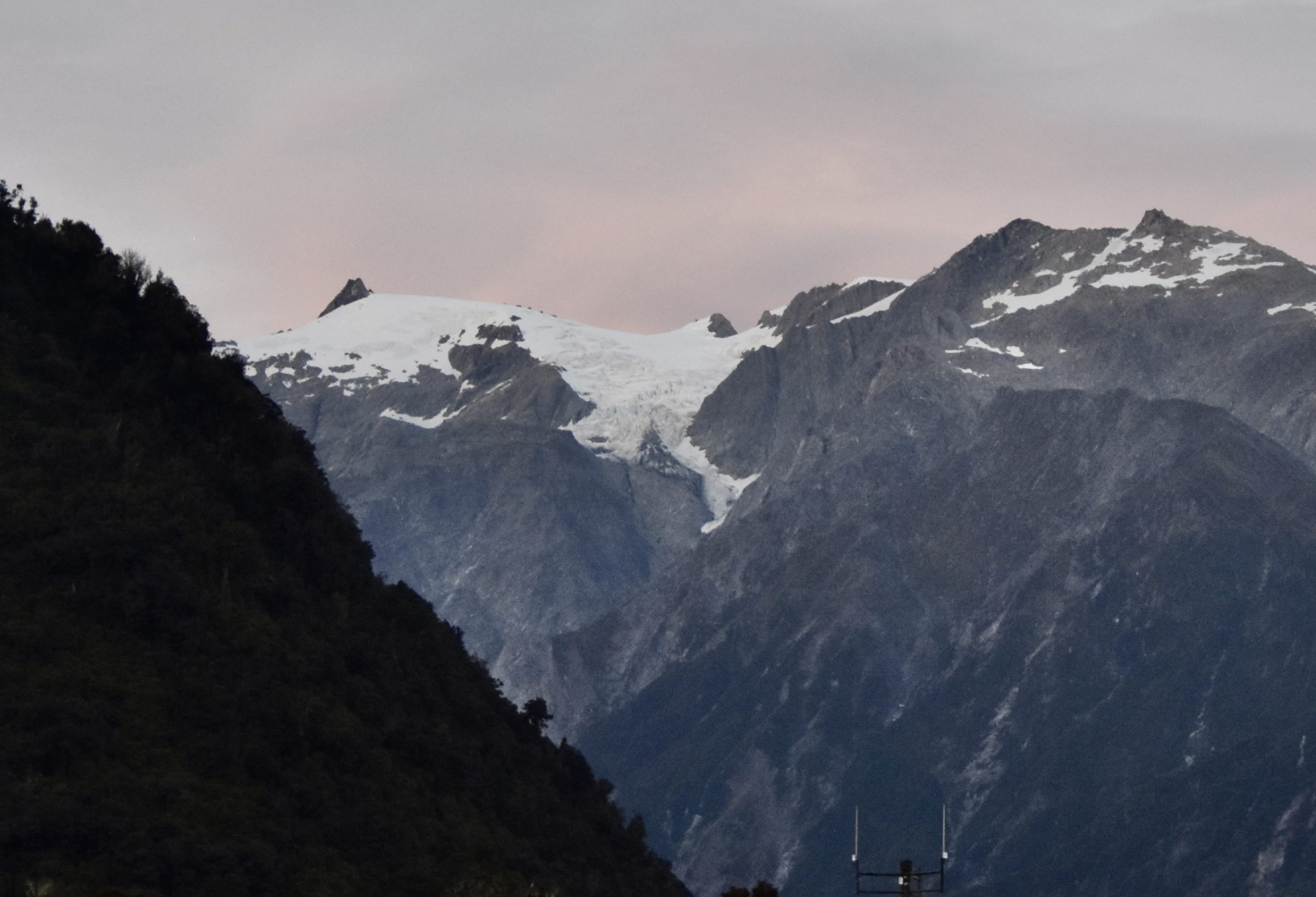
This is the view of the glacier from the grounds of the Scenic Hotel where we spent our third night on South Island. Although it looks formidable, a 1.5 hour hike will take you to a viewing platform near the foot of the glacier, something my daughter Lenore did a few years back.
Alison and I settled for something a little less time consuming, birding. If you want to see New Zealand’s other iconic bird, the kea, this is a great place to find one. With Ian’s help we spotted this fellow on a nearby roof and Alison got this photo on her phone. Once common on the South Island, they had a bounty put on them by sheep farmers and their numbers plummeted to less than 5,000 when the bounty was lifted in 1970. Now protected, their numbers have not really rebounded and today it is estimated that between 3,000 to 7,000 keas still exist. So, for birders, spotting a kea is a pretty big deal. It turns out Ian was a pretty good kea imitator and it was through his efforts that the birds ‘came a calling’ as it were.
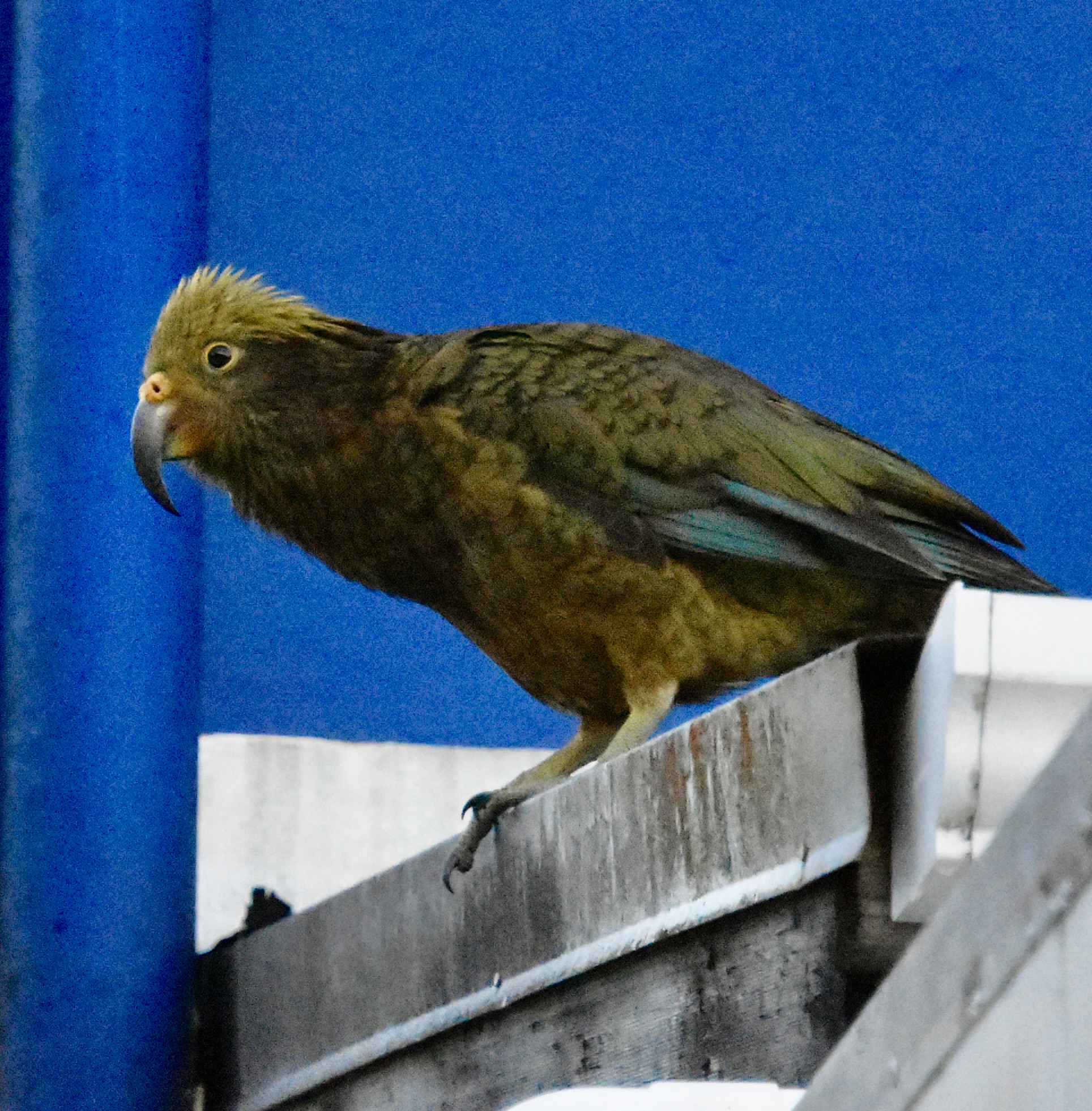
Franz Josef is also a great place to spot moas – really. Here’s the proof.
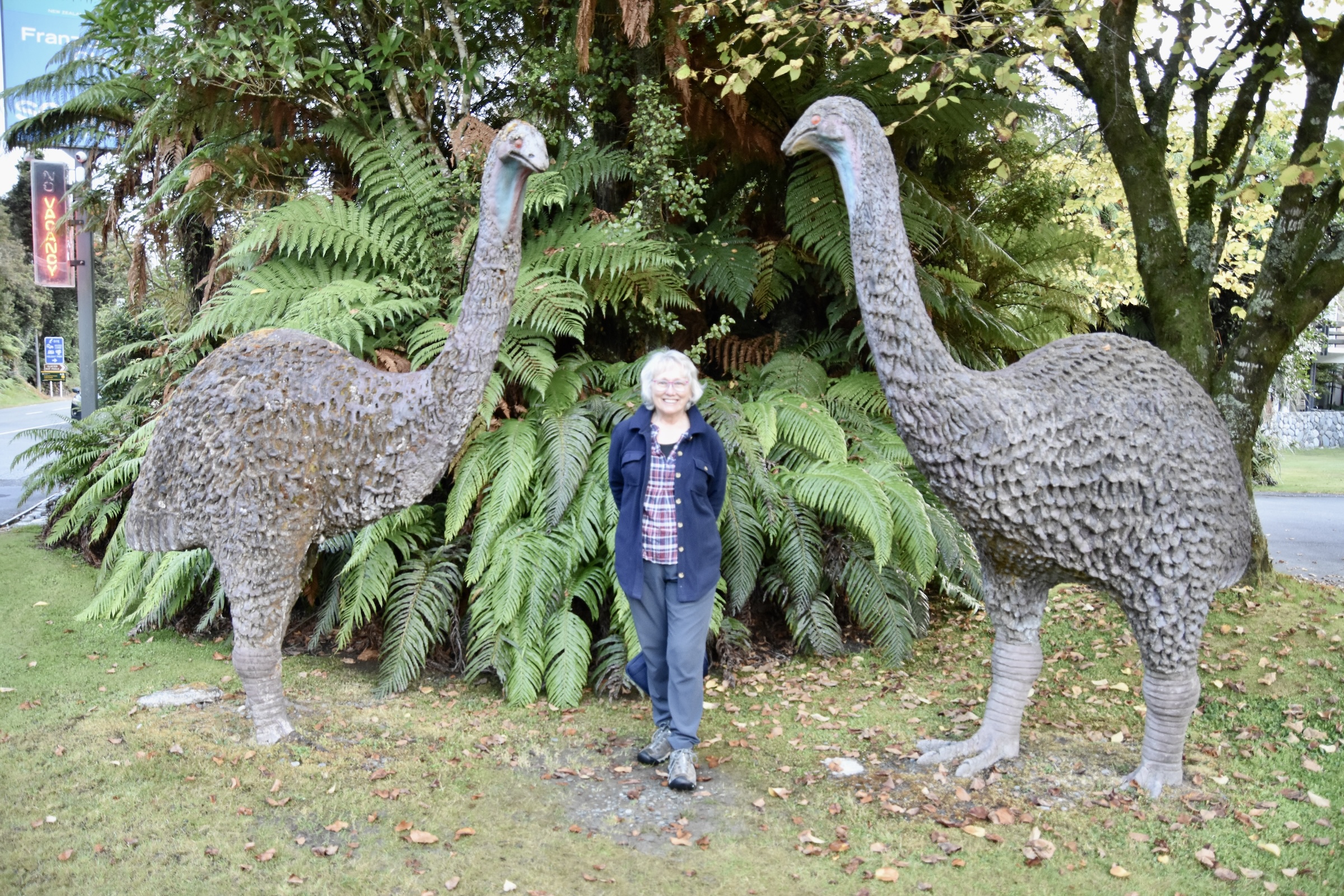
That concludes this post from South Island, but there’s lots more excitement to come starting with a jet boat ride on the Haast River. Hope to see you on board.

